If the future of Hi-Fi is going to be shaped by products like the Dutch & Dutch 8c Active Loudspeakers — the industry is finally learning some valuable lessons about what it needs to offer to achieve greater mainstream acceptance.
The $14,950 price tag might leave you to think that I’ve lost my mind suggesting that, but I’ve been around the block enough times to see the forest from the trees. Wireless active speakers (which these are not…yet) are the future and when they collectively start to achieve this level of performance — it will be ballgame over for large multi-box systems. And passive loudspeakers.
My inbox will be filled with “But they represent the present…” responses which is true — but they still have some kinks that need to be ironed out.
When Dutch & Dutch add some form of wireless capabilities to the 8c and make it easier to connect legacy devices (because some of us are never giving up our turntables) — they will become a logical replacement for any system over $20,000.
Dutch & Dutch have raised the bar rather high with the 8c and have almost boxed themselves into a corner because the market will demand more affordable models from them — once you give consumers a taste of what you can achieve at this level, there will be interest in multi-room systems or smaller versions for offices, bedrooms, dining rooms, and even outdoor spaces.
Can they produce models that achieve a similar level of performance and remain profitable?
The integration of DSP and room correction software in the 8c make them more room-friendly than any loudspeaker that has graced my home in over 2 decades of reviewing — that doesn’t make them my favorite loudspeakers of all-time, but they do so many things well that it’s almost hard not to appreciate their capabilities when you get everything correct; which definitely takes some work if you are not handy with room correction and set-up.
Is that it?
Not even remotely.
I’m going to take a different approach with this review because a product like the Dutch & Dutch 8c Active Loudspeakers need to be looked at from a more holistic angle.

The ability to minimize the impact of the room on the sound is a huge selling point and even though one can do that with software like Dirac Live that is being offered in a number of new AVRs, surround processors, and network amplifiers — you still need to buy a pair of loudspeakers, and a source.
The Dutch & Dutch 8c is a more expensive route but I’m not sure the more affordable option delivers the same sonic experience.
The 8c won’t become the ugly box in the room, but they will certainly force you to sit down and experience a full-range system with a limited number of components.
You are not limited to TIDAL or Qobuz even with the added bonus of Roon Ready certification, and you can access your ripped CD collection on a NAS using your existing home network.
I’ve used the Roon Nucleus for over a year as my primary digital source and my review made it very clear that it might completely change how you access and listen to your ripped CD collection and streaming platforms such as TIDAL and Qobuz.
The Skinny
Unboxing the 8c required some careful hands because they are deceptively heavy; the 57 pound cabinets are also extremely inert and I have nothing but praise for the build and construction quality.
The Solid Oak/White Baffle finish has a distinctively modern feel that will work in a myriad of settings; the overall industrial design is a blend of pro and consumer audio loudspeakers.
A loudspeaker this beautiful requires a custom pair of stands and there are more than a few capable furniture makers in the Netherlands or Denmark who could probably cook up something rather elegant to make it come together.
The 1-inch waveguide tweeter, nestled in a concave depression in the baffle, is designed to minimize diffraction.
The 8-inch cardioid midrange driver reduces the rearward radiation of midrange sound, resulting in improved flexibility of loudspeaker placement in the room and even frequency response across a wide area.
Additionally, the side vents produce a wavefront derived from the energy coming off the back of the midrange driver, canceling out energy that tends to bend around the cabinet corners, minimizing reflections.

The two 8-inch drivers, which Dutch & Dutch refer to as “subwoofers,” are mounted on the rear of the cabinet and driven by the internal 500 watt/channel amplifier.
My 24″ GHA welded iron stands provided a rather stable (albeit unattractive) platform for them, but I did worry that their overall size would create some instability on lesser stands.
The 8c are 19.09″ x 10.62″ x 14.96″ (H x W x D) and that might be too large for some top plates so make sure to measure before you set the loudspeakers on the stands.
All of the connections and controls are on the lower portion of the rear panel; on the far left, there is a connection terminal with the four signal connectors, the first three XLRs. The first is the main audio input, which can be used as a balanced analog input or as an AES3 digital input.

After the output of the first 8c is connected to the input of the second 8c, a termination plug (provided) must be inserted in the second loudspeaker’s throughput output.
The third XLR is a full-range, DSP-controlled subwoofer output.
Next is a small pushbutton for selecting analog and digital inputs, analog input sensitivity, and choice of digital channel; next to this is a column of LEDs that indicate the user’s selections
The RJ45 connector is the most important because it is essential for setting up the loudspeakers DSP settings and for connection to your local network.
You need to login into lanspeaker.com, the site where Dutch & Dutch’s web-based app resides. The app is relatively straightforward but I do think dealers need to be more actively involved in the process for customers who might not understand how useful the 24-band EQ can be; especially as it pertains to the loudspeaker’s bass performance.
Product Specifications
- Connectivity: Roon Ready
- Audio Inputs: AES3 over XLR
- Left / Right / Mono Channel Switch
- Balanced audio over XLR
- Sensitivity switch: +4 DBU / -10 DBV
- Peak input level: +24 DBU (+4 DBU setting)
- Audio Outputs:
- AES3 loop through over XLR
- DSP Controlled Output for Active Subwoofer
- Loudspeaker Drivers
- LF: 8” Aluminium Cone (2x)
- MF: 8” Aluminium Cone
- HF: 1” Aluminium / Magnesium Alloy Dome
- Maximum Sound Level
- 106 dB continuous from 35Hz upwards
- Total Amplification Power
- LF: 500 W MF: 250 W HF: 250 W
- Amplifier Type
- Class-D, Power Factor Correction, Hybrid Cooling
- Frequency Response
- 30 Hz – 20 kHz ± 1 DB
- Network
- Ethernet over RJ45
- Power Supply: 110V – 230V AC, 50 – 60 HZ
- Dimensions: (H X W X D) 19.09″ (H) x 10.62″ (W) x 14.96″ (D)
- Weight: 57 lb 5oz
- Finishes: Solid Oak, White Baffle/ Solid Oak, Black Baffle/ White Wash, White Baffle/Black Stain, Black Baffle

What’s in the Box?
- 2 x 8c speaker
- 2 x IEC power cord matching your regional power outlets
- 2 x CAT5e network cable;
- 1 x pair of gloves; for carefully handling your loudspeakers
- 1 x AES terminator
- 1 x Manual
System
When the 8c arrived, I only had two components that could work with the loudspeakers, the Cambridge Audio Edge A (using its balanced outputs) and the Roon Nucleus Network Streamer.
The 8c are Roon Ready loudspeakers so I had the option of connecting the Nucleus to either the Edge A first (and using that as a pre-amplifier) or going into my ASUS router.
The 8c will convert any analog signal to digital regardless of the source.
Connecting the Roon Nucleus might seem like a simple solution but it’s not for the simple reason that you are not connecting the Nucleus directly into the loudspeakers.
The Nucleus only has a single RJ45 connection so you will need to run two Ethernet cables (supplied in the box) to a network switch to keep both loudspeakers connected to your home network so that you can access the Nucleus and Roon.
The Nucleus proved to be the best possible source with the 8c because the handshake and integration were seamless.
Sound
Let’s get the bass performance out of the way because it was the hardest part of the overall sound to get correct in all three of my listening rooms.
Three?
Our home on the Jersey Shore is a lovely place to live; living 8 blocks from the Atlantic Ocean and miles of beaches is not the worst way to exist.
The problem is that our home is the typical American suburban dwelling with bouncy floors, thin walls, and uneven acoustics.
Our 23′ x 13′ x 8′ living room reverberates when we watch films with any subwoofer engaged and it is a superior listening environment when you are sitting slightly off-axis to the left of the LG OLED that hangs in the middle of the 23′ long wall. It is not ideal but it is our reality.
The 8c can be a fantastic 2.0 system for movies and music but its prodigious bass response was far too much for the room without any form of correction. I have zero doubt that it can play rather cleanly down to 20Hz in the right room — that wasn’t happening in the living room.
Having run subwoofers from Theory Audio Design, REL, and SVS in the same room — I’m keenly aware of the room’s limitations.
Watching Andor, the 8c were remarkably transparent, detailed, and spacious and more than capable of handling the dynamics of the show’s score. Dialogue was very clear and solidly in place.
The bass response felt rather uneven in the room; we moved the speakers further out into the room on either side of the BDI media cabinet and used the software to reduce its output in real time. It certainly helped but if we reduced the bass too much, the overall presentation started to feel too lean.
The 8c have a rather neutral tonal balance overall, but there is some added warmth in the low end that adds some needed texture to crashes, explosions, and space flight.
The imaging is rock solid and unlike a number of other loudspeakers that have passed through the room over the years, the 8c do not thrust the music or sound into your lap.
Musicians are placed only slightly in front of the cabinet which some might interpret as being rather reserved; the resolution, timbral accuracy, and coherency are so good that I wasn’t bothered by this aspect of its performance at all.
Dutch & Dutch recommends that the 8c’s and your listening position form an equilateral triangle, with the speakers toed in 45° — something that was impossible in the living room because of the furniture on either side of my 24″ stands. More on that later.

The Den
The 16′ x 13′ x 9′ den is a far superior listening environment; in spite of two openings into the front hallway and kitchen.
The 8c were easier to setup in this space and I could pull them as far as 3 feet from the wall behind them but settled on 26″ which worked the best in regard to the bass response which had a lot of impact and excellent definition.
Listening to Metallica’s Master of Puppets and And Justice For All (TIDAL), I drove the 8c extremely hard to see how well I could tune their presentation to the room; the slightly laid back presentation was almost preferable to how both of these albums usually sound with the Magnepan LRS and Q Acoustics 3050i.
The 8c’s bass response on “One” was extremely deep and very well defined and I found myself more than content with the volume levels that were lower than I normally listen to this track.
Both albums were well served by the rather balanced presentation and neutral tonal balance.
Amy Winehouse’s “Valerie” off the BBC Sessions release can be somewhat strident in the top end and the 8c proved to be rather restrained in the treble overall; there is a smoothness to the top end but with a definite loss of airiness and detail.
Sam Cooke, Frank Sinatra, Orville Peck, and Nick Cave had slightly more weight behind them than their female counterparts which confirmed that the upper bass and lower midrange have some added emphasis; in comparison to the PSB Synchrony B600s that I reviewed last summer, the 8c were decidedly warmer sounding in the bass and lower midrange giving instruments and males vocals greater texture and definition.
The imaging is more precise if you set the 8c up as Dutch & Dutch advise but I’ve never been an imaging junkie and preferred the overall tonal balance and wider soundstage with a minimal degree of toe-in.
A noticeable aspect of its performance that relates back to the controlled cardioid dispersion pattern is that music rarely extended that far in front of the baffle and there were numerous instances when listening to chamber music and jazz trios that the music filled the space between the loudspeakers and behind them to the wall.
In many respects, Dutch & Dutch have created an active loudspeaker that is easy to adjust to your room and rather balanced sounding overall. There wasn’t one moment when I felt the treble to be fatiguing even when the volume was pushed to above conversation levels.
Conclusion
The Dutch & Dutch 8c are not the perfect loudspeaker; no such product exists and even the best loudspeakers are just reproducing a moment in time that will affect each listener differently.
Its coherency, clarity, and speed are second to none in the price range and while achieving the proper balance in the low end requires a fair degree of experimentation — the end results can be rather spectacular once you dial that in.
Unlike my planar loudspeakers that create a wall of sound that is thrust forward into my listening space, the 8c are more restrained offering a tighter image and probably a more accurate representation of the music playing.
Not having a sample of the stands currently available in the Roon Store, it is impossible for me to comment on their build quality or effectiveness, but I will be rather clear for those in the back of the room — the 8c are not bookshelf loudspeakers and they certainly require inert stands for both safety and performance.
Do not set these up on anything higher than 24″ stands and the larger the top plate, the better off you will be.

The build quality is superb and the post-sale service is excellent here in N. America from the very knowledgeable team at Roon Labs.
My biggest wish list items would be a dedicated controller box with multiple sets of analog/digital inputs because you are somewhat limited unless you will only be using a dedicated network player like a Roon Nucleus or CD player — or you plan on using an existing AVR with balanced outputs or a pre-amplifier with balanced outputs.
The ability to place the Dutch & Dutch 8c close to the wall and not overload the room by altering their output using the EQ proved to be a major plus in two of my listening spaces. Every single listening environment offers its own unique set of problems and the ability to take the room (but not completely) out of the equation is a very valuable feature.
The $14,950 price of admission is certainly high but when you consider that you are getting a pair of very high performance loudspeakers, amplification, DACs, DSP, and set-up and room correction software as part of the overall package — the overall package is fairly priced.
This is a system that will only get better with software updates and that needs to be considered as well.
Does it make sense to just add a Nucleus or 3rd party network player and spend the rest of your days exploring millions of songs and get off the audiophile Merry-Go-Round?
For most people — the answer is clearly yes. Start saving.
For more information:





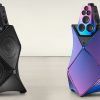








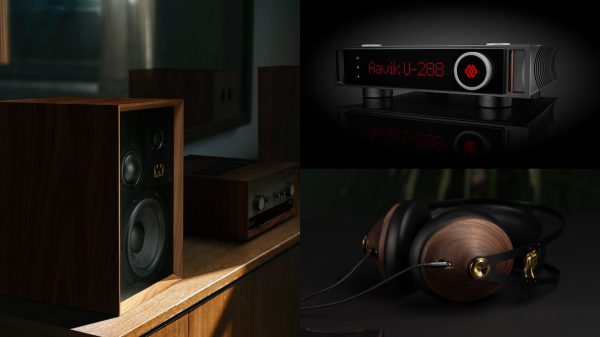
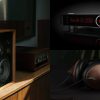
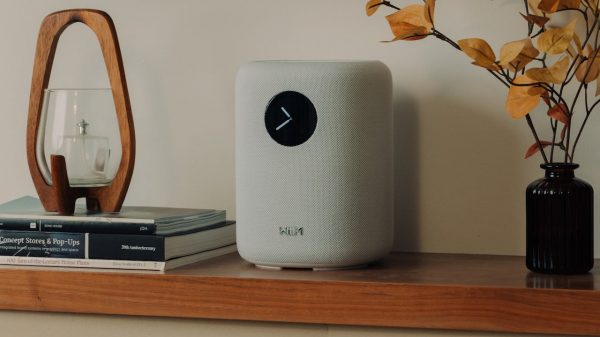
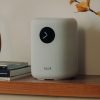



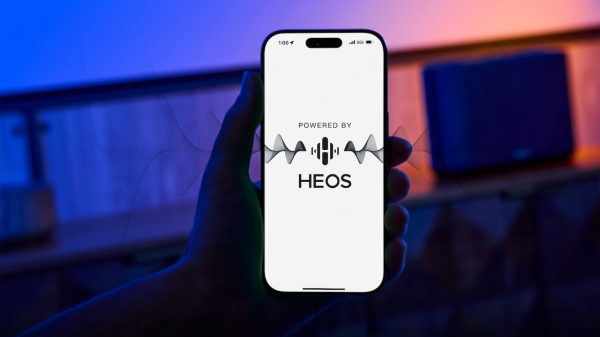

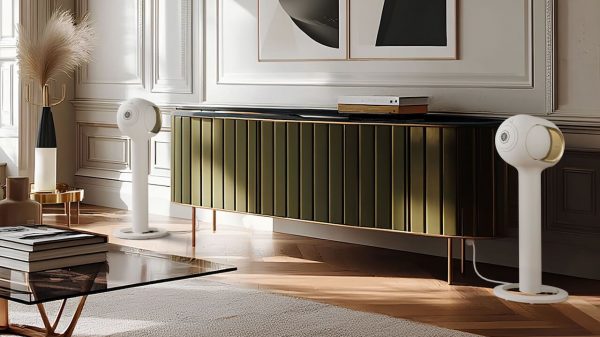
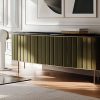


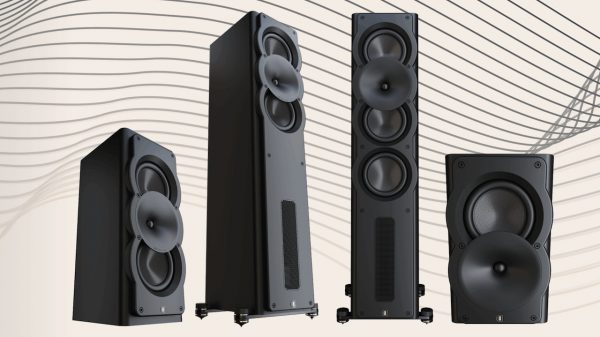
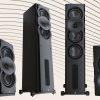











Peter
October 27, 2022 at 11:41 am
Hi,
Great review. Very much the same impression I have. Only one important thing to add. You have not really heard what the 8C’s are capable of until you use the integrated REW function. Just measure in REW and send the adjustment filters to the 8C’s (they will be stored there). In most rooms the speakers go from extremely good to absolutely outstanding…
jeff henning
October 27, 2022 at 7:03 pm
This speaker isn’t very different from what D&D have previously offered.
While I’m sure this is a fantastic speaker it does have one design flaw.
Jamming subs into any cabinet with mids and tweeters compromises the sound of the loudspeaker. There is no way those low end transducers won’t modulate the cabinet as well as cause it to slightly rock back and forth when you crank them.
A very well designed sub/sat system will offer greater clarity, more headroom and lower bass. It also will offer the option of placing the low bass drivers where they will perform best in the room. The set up is more difficult, but it’s worth it in the end.
It is cool that the speaker has a sub out. It would interesting to see what controls come with that.
Peter
October 28, 2022 at 7:34 am
Saying that the speakers have a design flaw that leads to compromised sound is a rather strong statement if you have not heard them. My experience is that they are the least compromised speakers I have heard in a normal home environment. In particular, the REW integration produces the most clear and even bass response I have heard over a large (living room sofa wide) listening area.